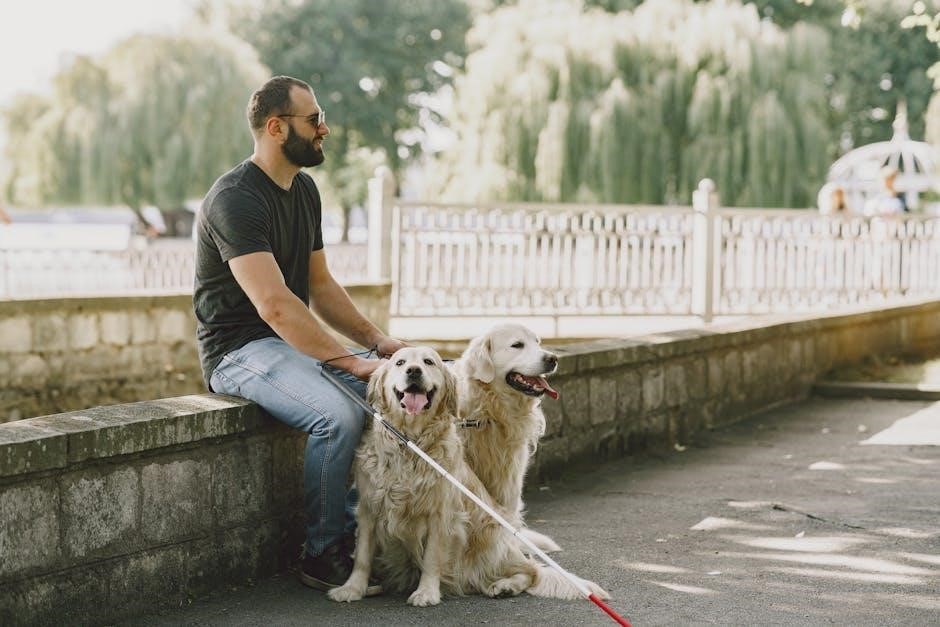Unlock the secrets to achieving a sharp and stylish beard fade․ This comprehensive guide provides practical tips, step-by-step instructions, and expert advice for mastering this popular grooming technique at home․
Beard fading is a grooming technique that involves gradually shortening the hair length of your beard as it transitions from the sideburns and neckline into the fuller part of the beard․ This creates a smooth, tapered look that adds definition and style․ The goal is to achieve a seamless blend, eliminating harsh lines and creating a visually appealing gradient․
The technique provides a clean and modern aesthetic, elevating overall appearance․ It’s versatile, fitting various beard lengths and styles, adding elegance to the manly look․ This guide is your key to mastering beard fading, whether you’re aiming for a subtle, professional trim or a more dramatic, statement-making style․ Get ready to transform your beard and enhance your personal style with the art of beard fading․
Preparing Your Beard for a Fade

Before diving into the fading process, proper preparation is crucial for achieving a professional and clean result․ This involves ensuring your beard is clean, manageable, and properly conditioned․ Start by washing your beard with a dedicated beard shampoo to remove dirt, oil, and product buildup․ After washing, gently towel-dry your beard, leaving it slightly damp․
Next, detangle your beard using a wide-toothed comb or beard brush, working from the ends towards the roots to avoid pulling or breakage․ This step is essential for removing any knots or tangles that could interfere with the trimming process․ Applying beard oil at this stage helps to soften and tame stray hairs․ A well-prepared beard will allow for a smoother, more precise fade․
Washing and Drying
The foundation of a great beard fade lies in starting with a clean slate․ Washing your beard thoroughly removes any dirt, oil, and product residue that can hinder the trimming process․ Use a beard-specific shampoo, as regular shampoos can strip the beard of its natural oils, leaving it dry and brittle․ Gently massage the shampoo into your beard, working up a lather and ensuring you reach the skin underneath․
Rinse thoroughly with lukewarm water until all traces of shampoo are gone․ After washing, gently pat your beard dry with a soft towel․ Avoid rubbing vigorously, as this can cause frizz and damage․ The goal is to leave your beard slightly damp, which makes it easier to manage and style for the next steps in preparing for the fade․
Detangling and Combing
Once your beard is washed and partially dried, detangling and combing are crucial for creating an even canvas for your fade․ Use a wide-toothed beard comb or brush, specifically designed for facial hair, to gently remove any knots or tangles․ Start at the bottom and work your way up, being careful not to pull or snag the hair․ This process not only smooths the beard but also helps to distribute natural oils, promoting healthy growth․
Combing also allows you to see the natural shape and length of your beard, which is essential for establishing a baseline before fading․ Comb your beard downwards, following the direction of hair growth, to identify any uneven areas or stray hairs that need to be addressed․ This step ensures that your beard is properly aligned and ready for the next stage of preparation․
Applying Beard Oil
After detangling and combing, applying beard oil is an essential step in preparing your beard for a fade, especially if you have a thick or coarse beard․ Beard oil helps to soften and tame the hairs, making them easier to manage and style․ It also provides essential moisture, preventing dryness and breakage during the fading process․
Dispense a few drops of beard oil into your palms and rub them together to evenly distribute the oil․ Then, gently massage the oil into your beard, starting at the roots and working your way to the tips․ Ensure that you reach the skin beneath your beard to moisturize and nourish the hair follicles․ This will help to create a smooth and healthy foundation for your beard fade, resulting in a more polished and professional look․
Establishing a Baseline Beard Length
Before diving into the beard fading process, establishing a baseline beard length is crucial for achieving the desired results․ This involves trimming your beard to a uniform length, providing a consistent canvas for the fade to blend seamlessly․ If you already have a regular beard-trimming routine, proceed with your usual method to achieve your preferred length․

If you’re new to beard trimming, start by washing and detangling your beard․ Then, use a beard comb to brush your beard downwards, following its natural growth pattern․ With your trimmer set to a longer guard, begin trimming your beard against the grain to remove excess bulk․ Remember, the longer the baseline length, the more dramatic the fade will be․ Repeat with shorter guards for a subtler effect․
Tools Needed for a Beard Fade
To achieve a professional-looking beard fade at home, having the right tools is essential․ First and foremost, you’ll need a high-quality beard trimmer with various guard sizes․ These guards allow you to control the length of the hair you’re trimming, creating the gradual transition that defines a fade․

A detail trimmer, also known as an outliner, is crucial for shaping the beard and creating clean lines around the edges․ A beard comb or brush will help detangle your beard and ensure a smooth, even trim․ A pair of scissors can be useful for trimming stray hairs or making minor adjustments․
Lastly, a mirror is essential for visualizing your progress and ensuring symmetry․ Good lighting is also crucial for seeing what you’re doing․ You may also want to have some beard oil on hand to soften and tame the hairs․
Step-by-Step Beard Fading Technique
Embarking on your beard fade journey requires precision and patience․ Start by defining your baseline beard length using the longest trimmer setting, removing excess bulk․ Then, choose the area where your fade will begin․ The higher you start, the more dramatic the fade․
Begin with a slightly shorter guard than your baseline, working upwards in short, controlled strokes․ Gradually decrease the guard size as you move lower, blending each section seamlessly․ Remember to use a scooping motion to avoid creating harsh lines․ Focus on the sideburns and neckline first․
Take your time, constantly checking your progress in the mirror․ Ensure both sides are symmetrical․ The key is to create a smooth transition between the different lengths, so no distinct lines are visible․ With practice, you’ll master the art of the perfect beard fade․
Setting the Trimmer Lengths
Achieving a seamless beard fade hinges on selecting the correct trimmer lengths․ Begin by determining your desired overall beard length․ This will be your highest setting and act as the foundation for the fade․ Next, choose several shorter guard lengths to create the gradual transition․
A common approach involves using three to four different guard sizes․ For instance, if your beard is at a #4, you might use a #3, #2, and #1 for the fade․ The key is to select lengths that create subtle yet noticeable differences between each section․
Always start with the longest setting and gradually work your way down․ This prevents accidentally removing too much hair․ Take your time to experiment and find the lengths that best suit your beard’s thickness and your desired fade intensity․ Remember, a subtle fade is easier to achieve than a dramatic one․
Fading the Sideburns
The sideburns are crucial for seamlessly connecting your beard to your hairstyle․ When fading the sideburns, start with the trimmer setting used for the lowest part of your beard fade, typically around the ears․ This will create a consistent transition․

Begin trimming the sideburns in an upward motion, gradually reducing the length as you move towards the top of the sideburn․ Use a scooping motion to avoid creating harsh lines․ Blend the sideburn fade into the overall beard fade by using the next longer trimmer setting to soften the transition․
Pay close attention to the angle of the fade․ Aim for a natural, gradual taper that complements your hairstyle․ Avoid creating a straight line or an abrupt change in length․ Regularly check your progress in the mirror to ensure symmetry and a balanced look․ Remember, the goal is a seamless and natural-looking fade․
Fading the Neckline
Fading the neckline is essential for a clean and well-groomed beard fade․ Start by defining your desired neckline, usually about an inch above your Adam’s apple․ Use a trimmer to create a guideline, ensuring it’s symmetrical on both sides․
Next, select a trimmer setting that’s one or two guards shorter than the length of your beard․ Begin trimming the hair below the neckline, using upward strokes to create a gradual fade․ Avoid creating a hard line, as this can look unnatural․
Blend the faded neckline into the rest of your beard by using the next longer trimmer setting to soften the transition․ Pay close attention to detail, ensuring there are no stray hairs or uneven patches․ Regularly check your progress in the mirror to maintain symmetry and achieve a smooth, seamless fade․ The goal is a clean and well-defined neckline that complements your beard style․
Blending the Fade
Blending the fade is where the magic happens, transforming distinct lines into a seamless gradient․ After fading the sideburns and neckline, the key is to eliminate any harsh transitions between the different lengths․ Use a comb to lift the hairs and identify areas that need further blending․
Employ the clipper-over-comb technique, using a longer guard setting to gently trim the ends of the longer hairs, creating a gradual transition to the shorter faded areas․ Angling the clippers slightly as you blend will help soften the lines even more․ Remember, small adjustments make a big difference․
Take your time and work methodically, frequently stepping back to assess the overall look in a mirror․ Focus on creating a smooth, natural-looking gradient where the faded areas seamlessly merge into the main beard․ The end result should be a polished and refined beard fade with no visible lines or abrupt changes in length․
Maintaining Your Beard Fade
Maintaining a beard fade requires regular upkeep to keep it looking sharp and defined․ The frequency of maintenance depends on your hair growth rate, but generally, a touch-up every one to two weeks is recommended․ This involves refining the faded areas around the sideburns and neckline to prevent the fade from becoming overgrown․
Use your trimmer with the appropriate guard settings to redefine the fade lines and remove any stray hairs that have grown out․ Pay close attention to blending the faded areas seamlessly into the rest of your beard․ Regular washing and conditioning are also essential for maintaining a healthy and well-groomed beard fade․
Applying beard oil or balm will help keep the hairs soft, hydrated, and manageable, making it easier to style and maintain the desired shape․ With consistent care and attention, you can keep your beard fade looking fresh and stylish for weeks to come․
Common Mistakes to Avoid
When attempting a beard fade, several common mistakes can hinder achieving a clean and stylish look․ One frequent error is rushing the process․ Taking your time and focusing on precision is crucial for a seamless blend․
Another mistake is using the wrong trimmer settings or skipping guard sizes, leading to uneven fading․ Always start with a higher guard and gradually decrease it for a smoother transition․ Neglecting to properly prepare the beard by washing, drying, and detangling can also result in a poor fade․
Additionally, creating harsh lines instead of a gradual fade is a common pitfall․ Blend carefully to avoid distinct steps in length․ Finally, failing to maintain the fade regularly can quickly diminish its appearance․ Consistent touch-ups are essential for a sharp, well-groomed beard fade․
Beard Fade Styles
The versatility of beard fades allows for various styles to suit different preferences and beard lengths․ A low fade provides a subtle transition, ideal for a more conservative look, gradually blending the beard into the sideburns and neckline․
For a bolder statement, a high fade starts higher up, creating a more dramatic contrast and accentuating the beard’s shape․ A drop fade incorporates a curved transition behind the ear, adding a unique touch․ Skin fades offer the most aggressive look, blending the beard down to the skin for an ultra-clean appearance․
Beyond these, consider a tapered fade for a more gradual and natural blend․ Ultimately, the best beard fade style depends on your individual taste and the desired level of impact․ Experiment to discover the fade that complements your features․